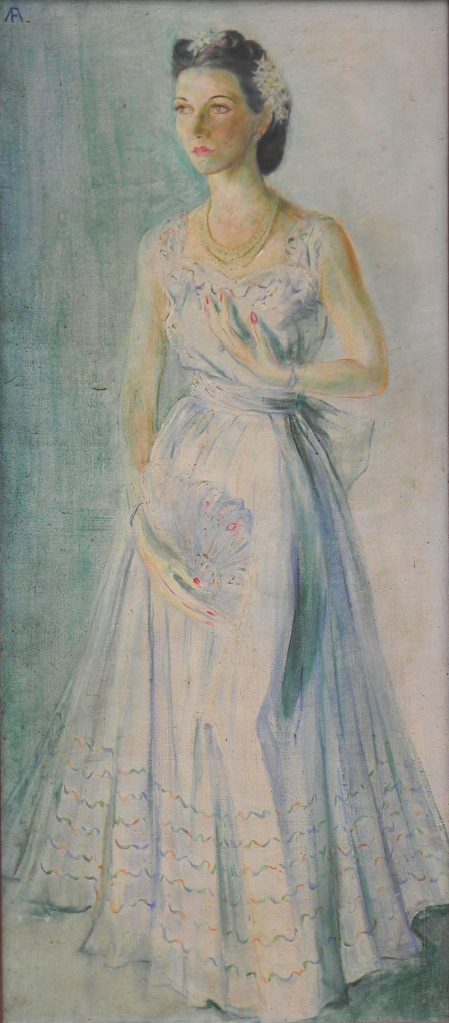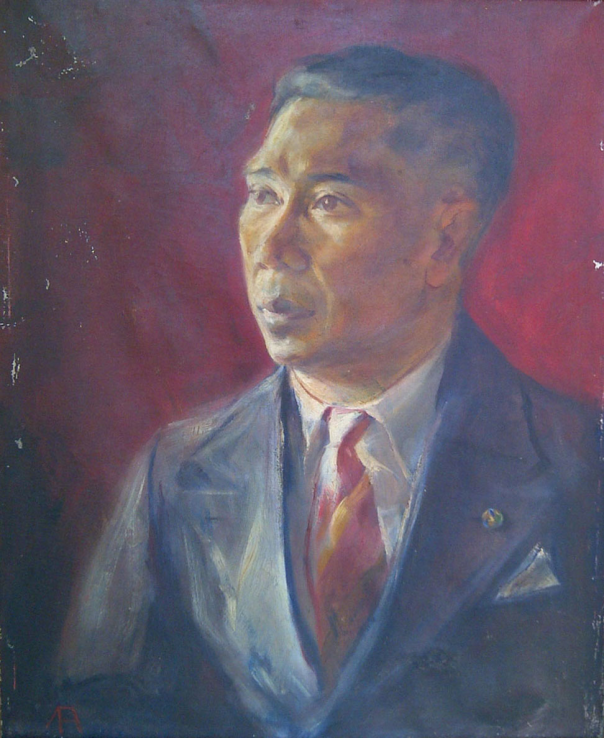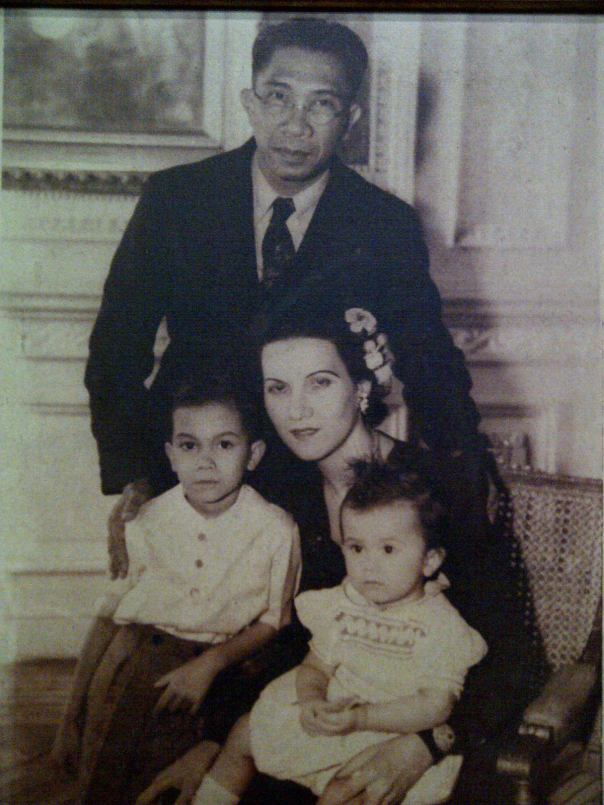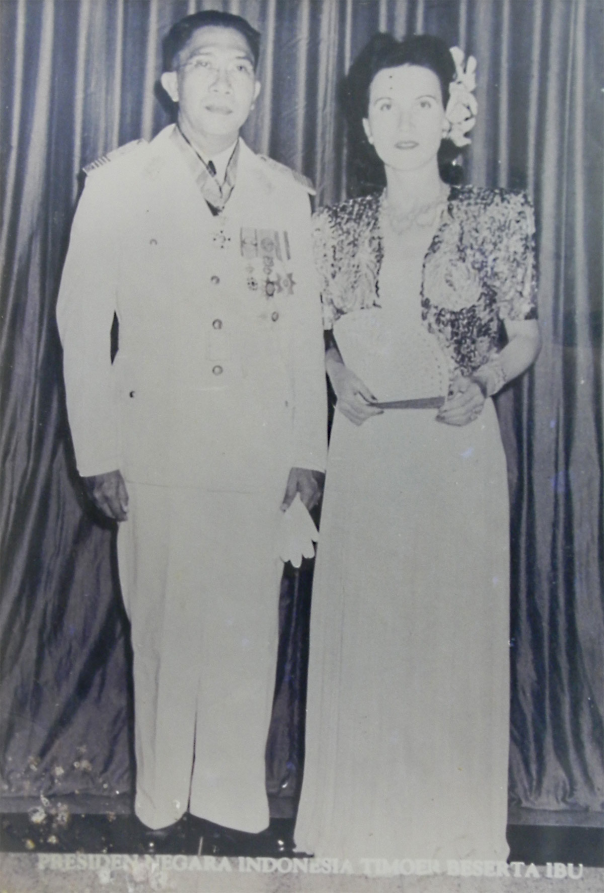

These two paintings have historical significance to Indonesia as they are portraits of Tjokorde Gede Raka Soekawati, the President of the State of East Indonesia from 1946 to 1950 and his wife Gilberte Vincent Soekawati who was a French national and later became an Indonesian citizen.
Affandi’s later style is known for its expressionist work using vibrant networks of lines to communicate his emotion. However, these two works, created in the 1940s, are part of his collection of realistic paintings from his early career before his style evolved into the more expressionistic works he is more widely known for. For this reason, coupled with their historical significance, these paintings by Affandi would be a rare addition to any important art collection.

 At the time these paintings were completed Affandi was known to paint in a realist style. While in the painting of Tjokorda he closely adhered to realism, the painting of Gilberte Vincent Soekawati shows evidence of the painter's use of loose rhythmic brush strokes as well as an early stage of his signature technique of directly squeezing the paints directly from their tubes to the canvas instead of his palette. The contrasting, though still complimentary use of colours in the two paintings further demonstrate his different approach to the two subjects. In Tjokorda’s more formal portrait the colours used evoke power and stature in accordance to the position the sitter held, strong reds and blacks, while in his wife’s portrait the cool colours of pale blue, green and white evoke delicacy and femininity. However even then his loose brushwork was already evident in some of his more informal pieces.
At the time these paintings were completed Affandi was known to paint in a realist style. While in the painting of Tjokorda he closely adhered to realism, the painting of Gilberte Vincent Soekawati shows evidence of the painter's use of loose rhythmic brush strokes as well as an early stage of his signature technique of directly squeezing the paints directly from their tubes to the canvas instead of his palette. The contrasting, though still complimentary use of colours in the two paintings further demonstrate his different approach to the two subjects. In Tjokorda’s more formal portrait the colours used evoke power and stature in accordance to the position the sitter held, strong reds and blacks, while in his wife’s portrait the cool colours of pale blue, green and white evoke delicacy and femininity. However even then his loose brushwork was already evident in some of his more informal pieces.This highly accomplished and internationally recognized Indonesian master was essentially self-taught. During the Japanese occupation he was involved in Poetera (People Activity Center). Moving to Yogyakarta during the Revolution, he participated in revolutionary activities and helped to set up Seniman Masjarakat in 1946. He co-founded Pelukis Rakyat (People’s Painters) with Hendra Gunawan in 1947. A scholarship to the School of Art of Santiniketan University took him and his family to India in 1949. Following this, they proceeded on an extensive tour of Europe before returning to Yogyakarta in 1954, when he became a lecturer at the Indonesian Fine Art Academy (Akademi Seni Rupa Indonesia/ASRI). He participated in the San Paolo Biennial II in 1953, and represented Indonesia at the Venice Biennial in 1954. Affandi went to Honolulu in 1967, as part of the first East-West Center Artist-in-Residence program, where he painted his first fresco. He received an Indonesian Art Award from the Ministry of Education and Culture in 1969 and was presented a Doctor Honoris Causa by the University of Singapore (1974) for his contribution to art. He also received the Dag Hammarskjoeld, an International Peace Prize from Italy in 1977, and the Indonesian Government’s Gold Medal in 1978.
written by Emily Graham, Sidharta Auctioneer Summer Intern 2013
For the e-catalog, click here: http://www.sidharta.co/fa2013/
No comments:
Post a Comment